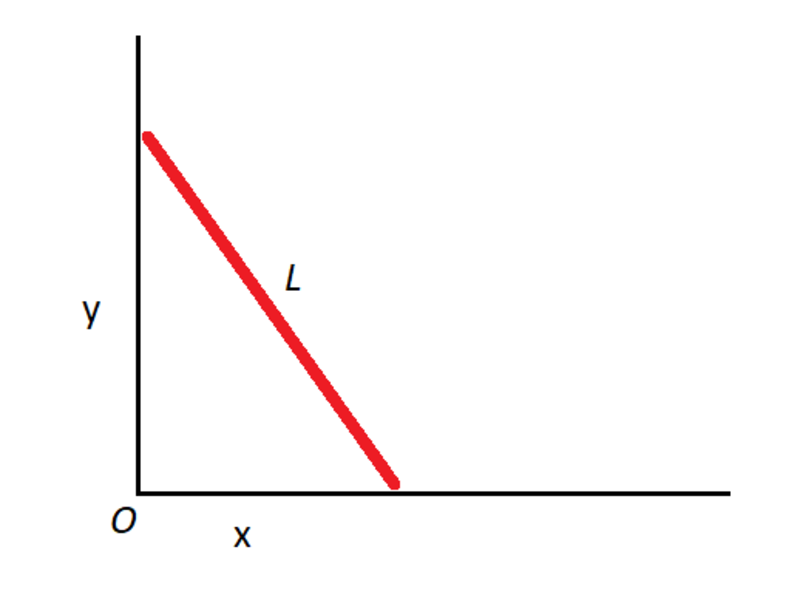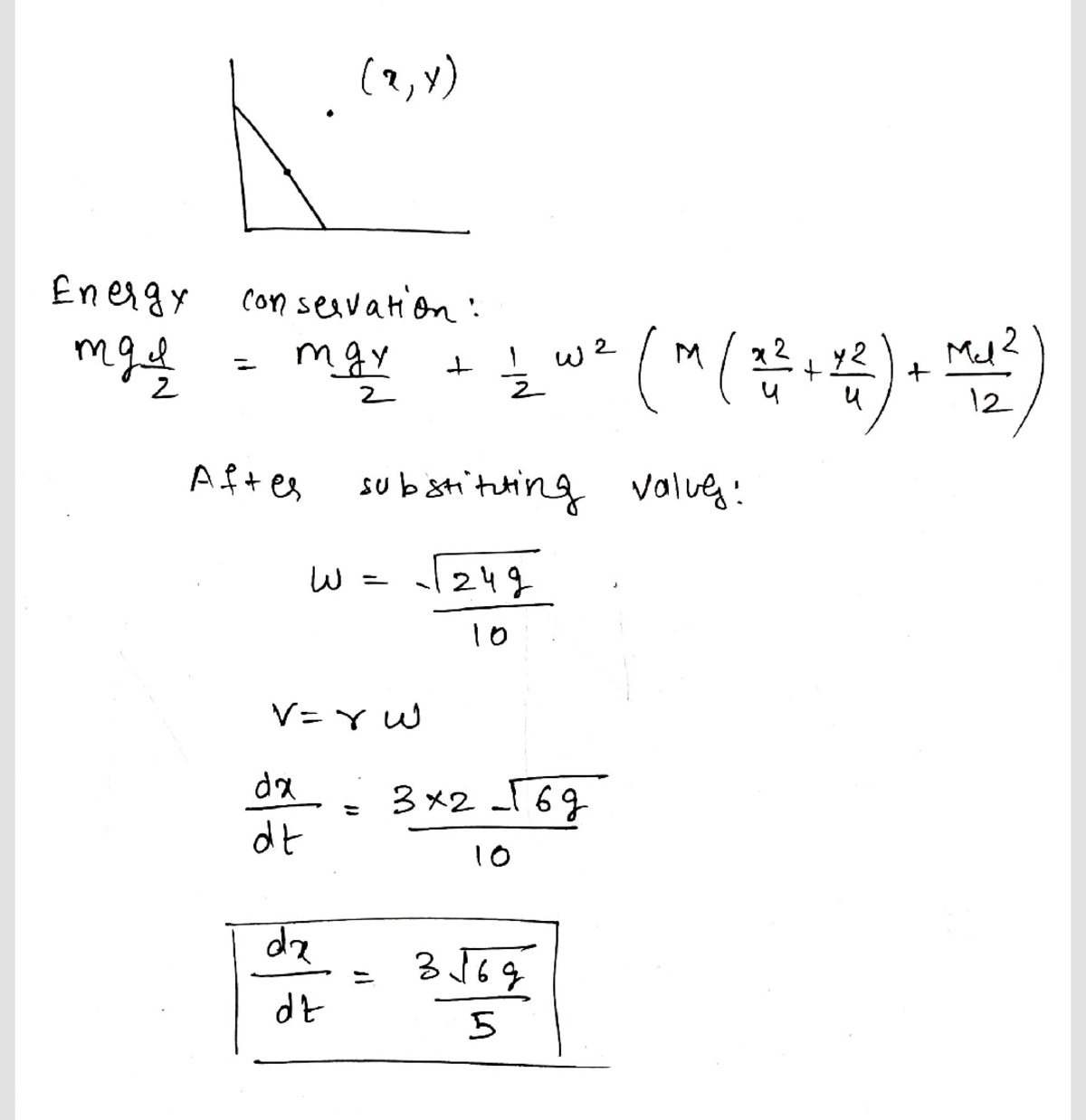Ladder Dynamics

A ladder of length is leaning against a frictionless wall (the y-axis), and is on a frictionless floor (the x-axis). Its two ends are at and . The ladder is released from rest with a very small . Find , when . The answer has the form , where , , and are positive integers with square-free, and and coprime, and is the gravitational accelertion. Find .
The answer is 14.
This section requires Javascript.
You are seeing this because something didn't load right. We suggest you, (a) try
refreshing the page, (b) enabling javascript if it is disabled on your browser and,
finally, (c)
loading the
non-javascript version of this page
. We're sorry about the hassle.

Let the acute angle that the ladder makes with the X-axis be θ . Assuming the ladder has mass uniformly distributed, it's COM lies at its geometric centre. With this in mind, the coordinates of the COG of the ladder are:
x L = 2 L cos θ y L = 2 L cos θ
Kinetic energy of the rod:
T = 2 m ( x ˙ L 2 + y ˙ L 2 ) + 2 I C O M θ ˙ 2 I C O M = 1 2 m L 2
Simplifying:
T = 6 m L 2 θ ˙ 2
Potential energy of the ladder is:
V = 2 m g L cos θ
Applying conservation of energy gives:
T + V = 2 m g L
Plugging in expressions and solving for θ ˙ : θ ˙ = − L 3 g ( 1 − sin θ )
The minus sign is introduced because as θ decreases, θ ˙ increases. When y = 3 , sin θ = 0 . 6 which gives:
θ ˙ = − 5 6 g
The X coordinate of the end of the ladder on the X axis is:
x = L cos θ x ˙ = − L θ ˙ sin θ = 5 3 6 g